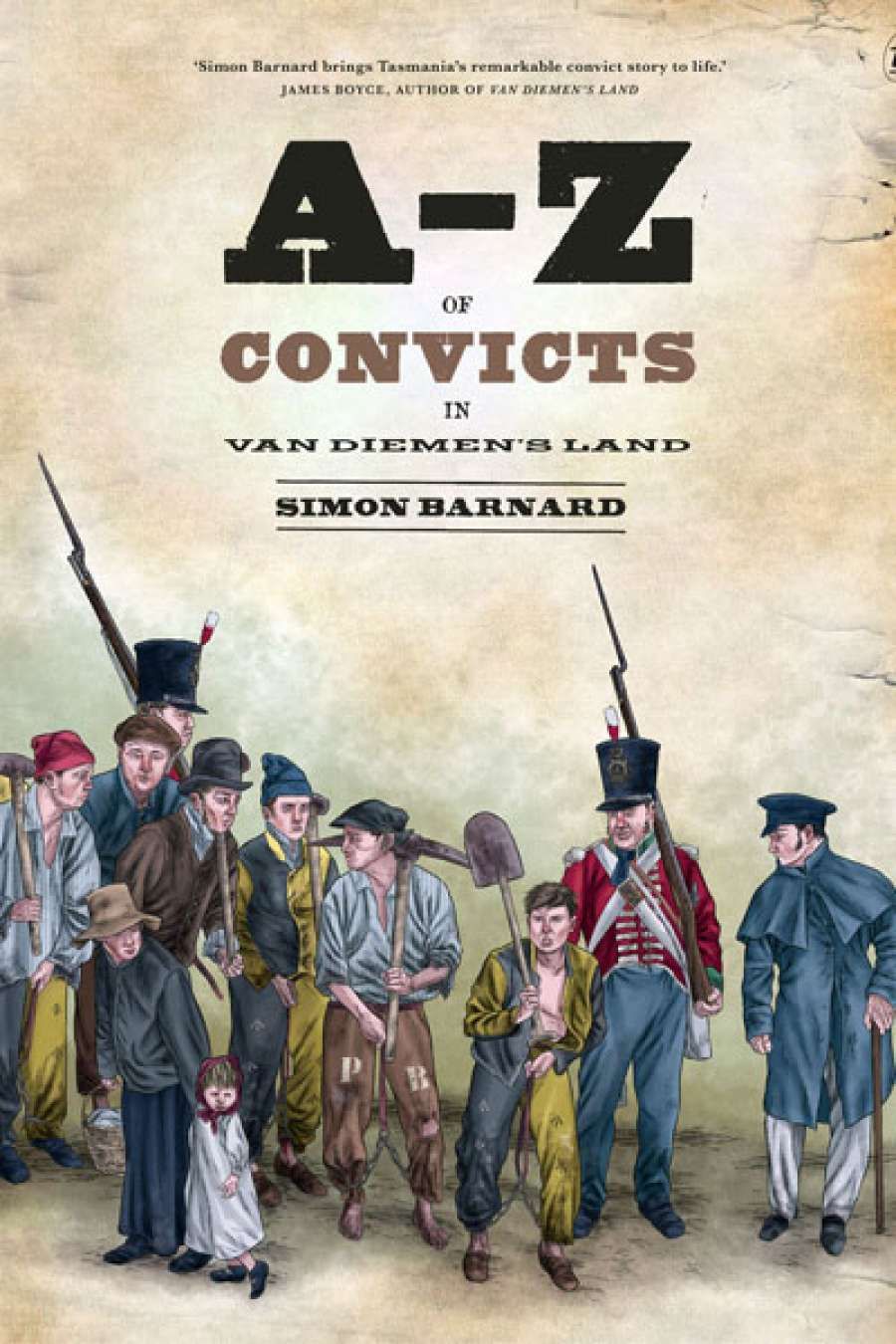
- Free Article: No
- Contents Category: Australian History
- Custom Article Title: Nigel Pearn reviews the 'A-Z of Convicts in Van Diemen's Land' by Simon Barnard
- Review Article: Yes
- Online Only: No
- Custom Highlight Text:
In times of high moral outrage at the barbarism of others, it is salutary to be reminded of the state-sanctioned viciousness of Australia’s past. Simon Barnard’s A–Z of Convicts in Van Diemen’s Land does this brilliantly. Australian convict history is a crowded field, but Barnard’s detailed and vivid illustrations breathe fresh life into it. In addition to the many architectural cutaway drawings (hospitals, jails, female factories, commissariats, coalmines, shipyards, treadmills), there is a wealth of social detail: the bell-pull system for solitary confinement cells, a water canteen, cell graffiti, named dogs of the Colony, the tattoos of Francis Fitzmaurice. Indeed, it is the rupture of the human dimension into the totalising aspects of the system that surrounded convict transportation that give this book real intellectual heft. The effect is achieved through image and text, drawing on the stories of many lesser-known personalities of the period from a rich range of primary source material.
- Book 1 Title: A–Z of Convicts in Van Diemen’s Land
- Book 1 Biblio: Text Publishing, $45 hb, 88 pp
Using the alphabet as an organising principle makes it an impressionistic rather than encyclopedic history. Nevertheless, from Barnard’s highly varied entries, a sense of the complex and chaotic society that was convict-era Tasmania emerges. There are also some evocative thematic junctures that emerge from the A–Z approach: leg irons, leisure, liquor, and love tokens; solitary and suicide.
Every school library should own the A–Z of Convicts in Van Diemen’s Land. The detail and variety of material will grab and hold children from the middle years of primary to the early years of secondary. Not to mention interested adults. It will be a teacher or parent’s job to encourage young eyes to move beyond the surface details of flogging and gibbeting, blood-letting and iron-collar wearing, to give a historical perspective on the brutal things that humans can do to one another, and also instil hope concerning society’s capacity for transition.


Comments powered by CComment